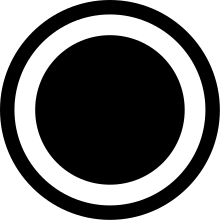
Back I. sbor Armády Spojených států amerických Czech I Corps (Vereinigte Staaten) German سپاه اول (ایالات متحده آمریکا) Persian 1er corps d'armée (États-Unis) French הקורפוס הראשון (ארצות הברית) HE I Corps (United States Army) Italian 第1軍団 (アメリカ陸軍) Japanese 제1군단 (미국) Korean I korps (USA) NB I Korpus (USA) Polish
| I Corps | |
|---|---|
 | |
| Founded | 1918 |
| Country | |
| Branch | |
| Type | Corps |
| Role | Administrative oversight in Asia-Pacific region |
| Part of | FORSCOM (ADCON) United States Army Pacific (OPCON) |
| Garrison/HQ | Joint Base Lewis-McChord (Forward at Camp Zama, Japan) |
| Nickname(s) | "America's Corps" |
| Motto(s) | Courage[1] |
| Engagements | World War I World War II Korean War Iraq War |
| Website | Official Website |
| Commanders | |
| Commanding General | LTG Matthew McFarlane |
| Command Sergeant Major | CSM Nema Mobarakzadeh |
| Notable commanders | List of commanders |
| Insignia | |
| Combat service identification badge |  |
| Distinctive unit insignia |  |
| Flag |  |
| U.S. Corps (1939–present) | ||||
|
The I Corps is a corps of the United States Army headquartered in Joint Base Lewis-McChord, Washington. It is a major formation of United States Army Pacific (USARPAC) and its current mission involves administrative oversight of army units in the Asia-Pacific region, including the Pacific Pathways program.
Activated in World War I in France, the I Corps oversaw US Army divisions as they repelled several major German offensives and advanced into Germany. The corps was deactivated following the end of the war. Reactivated for service in World War II, the corps took command of divisions in the south Pacific, leading US and Australian Army forces as they pushed the Japanese Army out of New Guinea. It went on to be one of the principal leading elements in the Battle of Luzon, liberating the Philippines. It then took charge as one of the administrative headquarters in the occupation of Japan.
Deployed to Korea at the start of the Korean War, the corps was one of three corps that remained in the country for the entire US participation in the conflict, commanding US, British, and South Korean forces through three years of back-and-forth campaigns against North Korean and Chinese forces. Following the end of the war, it remained in Korea for almost 20 years guarding the Korean Demilitarized Zone. Active today, the corps acts as a subordinate headquarters of United States Army Pacific, and has also seen deployments in support of Operation Iraqi Freedom and Operation Enduring Freedom.